Branding: that’s shoe biz
Zeynep Arsel, associate professor, Department of Marketing
"It’s easy for shoe lovers to get carried away..." Read more
On the right foot
Yellow booties, red shoes, cowboy boots, flowered pumps, teetering heels, cleats, platforms, ballet flats, sneakers, flip-flops. The list of foot-covering options for men and women seems endless.Shoes can be practical, expressive, demonstrate status or social views — and so much more. It’s a huge business. Statistics Canada reports that shoe stores hit $259 million in sales in December 2013 alone.
The global footwear market is expected to reach US$195 billion by 2015, according to research from Global Industry Analysts. And footwear is the only Canadian apparel industry sector that’s growing, according to recent findings by international marketing firm NPD Group. Hudson’s Bay Company and other department stores are expanding their shoe departments, especially at the higher end of the market.
Concordia experts step in to offer their expertise on footwear-related topics:


If the shoe fits: healthy footwear
David Paris, associate professor, Department of Exercise Science
"The purpose of footwear is to protect feet..." Read more

Feminist footwear
Kerry McElroy, film historian and feminist scholar
“Fashion — including footwear — can be a tool of liberation and oppression..." Read more

Ritual soles: shoe psychology
Andre L. Souza, postdoctoral studies, Centre for Research in Human Development
"From runners to speed skaters to tennis professionals..." Read more

Shoes on first: design for theatre
Amy Keith, lecturer, Department of Theatre
"Good theatre casts a spell over the audience..." Read more

Breaking the glass slipper: Cinderella
Elaine Pigeon, part-time faculty, Department of English
"In the fantasy shoe hall of fame right next to Dorothy and her ruby red heel-clickers sits Cinderella..." Read more

Zeynep Arsel
Owns: 21 pairs, wears same two or three
Favourite pair: black chuck taylor high tops
It’s easy for shoe lovers to get carried away. Take Imelda Marcos, the infamous former Philippine first lady, whose collection was rumoured to count more than 3,000 pairs.
In one episode of the popular television sitcom Sex and the City, Carrie Bradshaw (Sarah Jessica Parker) realizes she doesn’t have the money for a deposit on an apartment because she has spent $40,000 on shoes, feeding her obsession with pretty — and pricey — Manolo Blahniks.
Those designer shoes retail for hundreds of dollars, while Louboutins, with their patented red soles, start at $500 for canvas espadrilles and run over $6,000 for studded party shoes. “Shoes have become part of the pop culture dialogue. Even when people can’t afford $600 shoes, these designer luxuries are increasingly perceived as a necessity,” says Zeynep Arsel, associate professor in Concordia’s Department of Marketing in the John Molson School of Business.
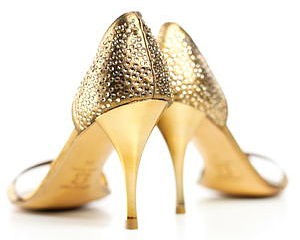
When you can buy perfectly functional footwear for less than $50, why are consumers willing to drop a month’s rent on a pair of shoes? “It’s all about the brand. While a $500 shoe may be aesthetically different than one made to lower standards, a lot of marketing goes into giving it an aura of exclusivity and inaccessibility,” says Arsel. “People build their identities through these marketplace resources.”
During the 1980s, an era of exploding stock markets and conspicuous consumption, companies took an in-your-face approach to marketing their brands, with huge logos dominating everything from bags to T-shirts. “Brands are more subtle these days, no longer signalling status to lower classes, but to peers. It’s more difficult to spot luxury footwear — like Louboutins or Manolo Blahniks — unless you’re part of the club. Exhibiting status becomes less about the object than knowledge of the object,” Arsel says. When it comes to athletic shoes, brands appeal for different reasons. “As a culture, we’re obsessed with achievement and pushing the human body to levels previously reserved for athletes. Nike targets and appeals to that desire,” she adds.
Subcultures also express themselves through particular brands. Nike Dunks are favourites with the hip-hop crowd and hipsters prefer Converse All Stars.
“Skaters have appropriated Vans. To some extent, the brand’s appeal comes from the functionality of the shoe. They’re designed for stability on a skateboard, but that aesthetic has become co-opted by mainstream members of society,” Arsel says. “Brands are smart. Since the early days of advertising, they’ve evolved from marketing on functionality to a more sophisticated approach, tapping into our deepest anxieties and desires. We want to be cooler, smarter, better.”
—Louise Morgan

David Paris
Owns: a dozen pairs,
wears four
Favourite pair: running shoes
The purpose of footwear is to protect feet — yet many consumers choose their shoes purely for fashion appeal. Whether for every day, a night out or a trip to the gym, improper footwear can lead to a lifetime of chronic pain.
“It’s a chain. People often don’t realize that pain in the shins, knees, hips and lower back can relate to the biomechanics of the feet,” says David Paris, associate professor in Concordia’s Department of Exercise Science and a certified athletic therapist who has worked with Canada’s national soccer team.
“To prevent injury, the first rule of footwear is to match the shoe to the foot, not the other way around,” he says.
Not all feet are created equal. “About 70 per cent of people have pronated — or flat — feet and require shoes that support and stabilize the ankle. One per cent of the population have rigid, supinated feet, meaning their arches are very pronounced. They benefit from more neutral, cushioned soles to compensate,” Paris explains. Everyone else stands somewhere in between.
Athletic shoes today are generally divided into these two basic categories, while everyday footwear is not. “It’s important to realize that if your feet are pronated, you need the extra support including a more rigid heel cup at the back of the shoe and a proper lacing system,” says Paris.
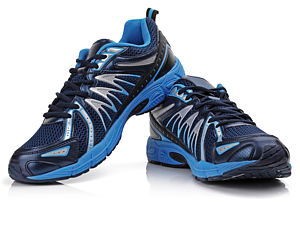
While it’s easy to convince people to wear correctly fitted athletic shoes, it can take much suffering to change the footwear habits of certain career professionals.
Reluctant to part with their pumps despite pain, a number of female CEOs and lawyers have asked Paris for orthotics. The custom-made inserts distribute pressure or realign the foot’s joints to offset structural problems. “Orthotics are not meant to compensate for bad shoes. They may mitigate symptoms temporarily, but they’re not going to solve the problem,” says Paris.
“To me, making orthotics for high heels seems counterproductive, so I won’t do it. High heels are fine to go to a wedding or to put on for an important meeting, but 95 per cent of the time, we should be wearing sensible shoes,” he says. “Constantly being in high heels is detrimental.” Over years, calf muscles shorten to the point where it becomes difficult to get the heel on the ground. High heels can also negatively affect the lower back.
When high heels are required, Paris recommends no more than two inches in pitch. That’s the height difference between the forefoot and the rear of the foot.
The toes naturally spread when the foot touches the floor, so Paris advises, “Avoid a narrow or pointy toe box — the area around the toes — since that can cause bunions.”
Next time you’re out shopping for shoes, Paris suggests you get advice from a knowledgeable salesperson who knows not only about shoes but also about feet. That may take a trip to a specialty store.
—Louise Morgan

Kerry McElroy
Owns: 20 pairs
Favourite pair:
nude ballet flats
“Fashion — including footwear — can be a tool of liberation and oppression. It provides one of the strongest visual statements of identity within culture,” says Kerry McElroy, women’s studies scholar and PhD candidate at Concordia’s Centre for Interdisciplinary Studies in Society and Culture.
“Unfortunately women are getting many mixed messages and there’s a lot of confusion about what’s sexy, empowering, liberating,” she says. “If a woman feels empowered or that her identity is enhanced wearing stilettos or Birkenstocks, that’s her choice.”
Accepting a woman’s decision is a reflection of today’s third-wave feminist view — to embrace diversity and reject any criticism of how a woman expresses herself. The trouble is, according to McElroy, if critique is considered wrong, we lose constructive dialogue.
This inclusive view of feminism took hold in the 1990s as a reaction to the bra-burning, second-wave of the 1960s, when high heels and traditional patriarchal feminine ideals were rejected.
Yet even today, McElroy says, “I have friends working in the corporate world who would stand out wearing flat shoes. It’s part of their corporate wardrobe to wear four-inch heels and a pencil skirt. You can’t be too frumpy or you won’t get ahead.”
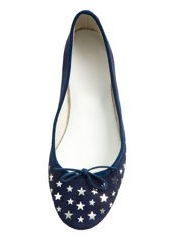
McElroy believes the ideology at times went too far in the 1970s, in instances where it mandated throwing out all of the accoutrements of femininity in favour of androgyny. “At same time, if we’re in an environment where enforced femininity in the form of high heels, tight clothing and makeup is culturally mandated, then a lot of the work that was done has been pushed backwards.”
This swing of the pendulum — continuously rebelling against society’s latest feminist slant — results in lukewarm, quasi-feminism, McElroy says.
She points to a popular 1990s trend: “Women were rejecting second-wave feminism by wearing girly, baby doll dresses, but they were also rejecting mainstream femininity by wearing them with combat boots. Then, by the early 2000s, Britney Spears had come in and the whole circle was reset to the old free sexuality being sold as empowering.”
McElroy points out the challenge brought on by that thinking. “You get into this muddle where anything a woman does is empowering and feminism is whatever you want it to be. I think that’s a mistake,” she says.
Some younger women who aren’t exposed to feminist discussion might have the mistaken impression that walking around in eight-inch, clear heels is empowering, she says. “Not so much, if you can barely walk.”
McElroy issues a caution: “Whatever a woman chooses to wear, she should be aware of when she’s being marketed to and manipulated. Fashion is still fuelled by a corporate, capitalist society that sells women an idea of beauty.”
—Louise Morgan

Andre L. Souza
Owns: only one pair of shoes
Favourite pair: a pair of Nike running shoes
From runners to speed skaters to tennis professionals, most elite athletes rely on footwear that performs optimally under extreme conditions. Yet for some top athletes on competition day, it’s the ritual surrounding their footwear that can make or break a performance.
Superstition is strong for tennis champion Serena Williams, who is rumoured to tie her shoes exactly the same way before a game and wear the same pair of socks for an entire tournament. So deeply embedded is this ritual, Williams has attributed major losses to deviating from her routine.
What makes a highly trained professional engage in ritual behaviour where no clear connection exists with the associated outcome? “It’s a coping mechanism embedded in our cognitive system. When faced with a situation that produces negative emotions like fear or lack of control, we’re biologically wired to avoid them,” says Andre L. Souza, who recently completed postdoctoral studies at the Centre for Research in Human Development in Concordia’s Department of Psychology.
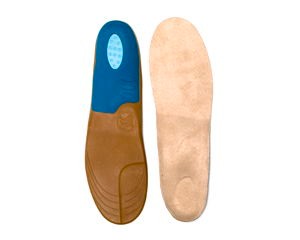
There’s a physiological aspect to what’s going on. Negative emotions trigger the body to release substances that tell our cognitive system to act, he explains. “If we’re unable to stand by passively in a situation whose outcome is unknown, such as a competitive sporting event, we unconsciously choose to believe there is something else at play. Performing an action — any action — tells our cognitive system that we’re taking control of the situation. It gives us the illusion of control,” he says.
Souza’s recent research at Concordia, published in the journal Cognitive Science, revealed that the less control we have over a situation, the more effective this kind of ritual action is perceived to be. Similarly, the more repetitions are performed, the more likely something is to work and your desired outcome will manifest. “It’s like pressing an elevator button 10 times,” Souza says. “Rationally we know the elevator won’t come any faster, but somehow we still do it.”
—Louise Morgan

Amy Keith
Owns: about 20 pairs of shoes
Favourite pair: iridescent green leather boots with a lightning bolt on the side
Good theatre casts a spell over the audience, drawing members from their plush seats into the world unfolding on stage. No matter how good the play or its actors, however, costume design can make or break that spell – sometimes quite literally, when it comes to footwear.”
Shoes break all the time,” says Amy Keith, BFA (design for theatre) 99, with a sigh. She teaches costume design and production in Concordia’s Department of Theatre and has seen her fair share of snapped heels, ripped laces and stretched-out soles. As the first costume element to come into the rehearsal process, shoes tend to receive the biggest beating.
“Most directors and actors ask for footwear early in rehearsals,” said Keith. “So before you’ve fully realized the costume, you’ll be providing the footwear so that they can rehearse while wearing them.”
What actors put on their feet, she explains, has a big influence on how they move on stage and shape their character. “Shoes can really define a person,” says Keith. She points to someone she spotted one morning on the metro, a guy dressed in patches and studs sporting a goatee and “classic 18-hole Doc Martens, completely torn to shreds. His toes were hanging out of one of the boots.”
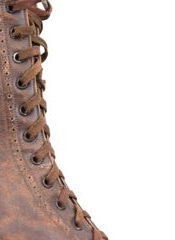
Finding the shoe that fits, so to speak, can be an adventure in itself. While working on a production, Keith recalls scouring the city for last-minute, pleather replacements for a very specific Victorian-style boot when the actor revealed she was vegan and didn’t wear leather. Finding historically accurate period shoes often proves impossible, challenging the production crew to find creative solutions or to sometimes, in Keith’s words, “fake it” with similar styles.
“Shoes are the item that we get the most complaints about. You’re often left at the very end trying to find replacements for the right shoe despite trying to get them in early in the rehearsal process,” she says.
There are a plethora of practical difficulties to consider as well, like budget restraints and noise levels — if the stage is hollow, for example, clomping heels are a director’s nightmare. This means a costume designer must be able to adapt to changes at the drop of a clog.
Yet the biggest hurdle by far is comfort. “Actors don’t want to be thinking about their feet as they’re reciting their lines and thinking about being in character,” says Keith. Being able to move takes precedent over looking good; style or design can’t come first when the kind of shoes an actor wears affects his or her physicality on stage.
While enduring weeks of seven-hour rehearsals in stilettos or floppy boots can be downright brutal, actors will only be wearing them on stage for 90 minutes tops — and Keith reveals that sometimes compromises are reached to keep the magical visual world intact.
—Alyssa Tremblay

Elaine Pigeon
Owns: 40 pairs
Favourite pair: a pair of Dansko clogs, “because they’re so comfortable, not at all like glass slippers.”
In the fantasy shoe hall of fame right next to Dorothy and her ruby red heel-clickers sits Cinderella, perhaps the most iconic character to ever don — and lose — a pair of shoes.
But those delicate glass slippers have had a heavy impact on the minds of girls, according to Elaine Pigeon, BFA (cinema) 90, MA (English) 94, a part-time professor in Concordia’s Department of English who also holds a PhD in English Studies from Université de Montréal.
Pigeon presented her essay, “Too Good to be True: Virtue Rewarded in Cinderella,” at the Global Conference on Femininities and Masculinities in Prague, Czech Republic, in 2013. The essay points out the troublesome narrative of this classic rags-to-riches tale in which the heroine gets her happy ending by never standing up for herself. “Cinderella is being abused and is rewarded for not complaining about it,” says Pigeon. Her submissiveness towards her stepmother earns her power and princess status, endorsing passive “good girl” behaviour as a viable path to success for young women.
In this reading, the glass slipper itself becomes a problematic symbol and enforcer of so-called feminine virtue. The impractical shoe, first introduced in Charles Perrault’s 1697 adaptation Cendrillon, nearly prevents Cinderella from escaping the ball in time — a nod to the reality that many women’s shoes, like extremely high heels, are disabling to a certain point.
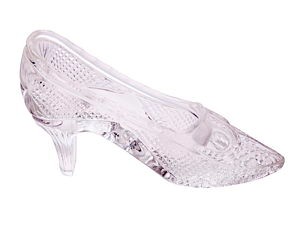
There’s also a predatory connotation to the prince keeping the shoe as a trophy and using it to hunt her down.
Last fall, Pigeon taught a course on children’s literature at Concordia. She noticed that students were reluctant to let go of their “magical beliefs” of childhood imprinted in the form of myths and fairy tales; those old familiar narratives whose patterns repeat in modern stories, like that of the virtuous hero.
“Many adults still hold onto the idea that if they’re good, they will be rewarded — which is simply not true,” she explains. While Cinderella goes from sweeping chimneys for her cruel stepmother to sweeping across the ballroom floor with a prince, it takes an impossible transformation via magical intervention from a fairy godmother.
Pigeon warns that the Cinderella myth still has “an awful lot of power” in contemporary society — consider that while far from being Disney’s most profitable film, Walt’s powder blue-gowned beauty from 1950 continues to grace backpacks and colouring books today. “Young woman are still buying into Cinderella,” she says. “It can be difficult to give up the enchantment and very easy to follow the urge to slip into a passive role, to wait to be rescued and taken care of.”
If only they had the right glass slipper.
—Alyssa Tremblay